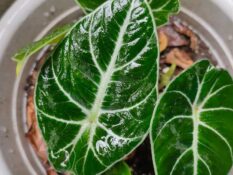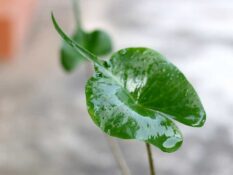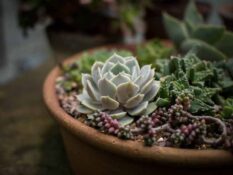Did you know that Abelia plants make great additions to both gardens and indoor spaces? Abelia plants are known for their beautiful flowers, which come in various colors, including pink, white, and red. They can be planted at different times of the year, depending on your location, and they are relatively easy to care for.
In this guide, we'll cover everything you need to know about growing Abelia plants, including where to buy them, when to plant them, what varieties are best suited for your climate zone, how to grow and care for Abelia properly, as well as common pests/diseases and management techniques. So let's get started!
What is Abelia?
Abelia is a genus of flowering shrubs that are native to many parts of the world and come in a variety of sizes, shapes, colors, and textures. These low-maintenance plants make an excellent addition to any garden or landscape due to their vibrant colors and attractive foliage. With proper care, Abelia can thrive for years with minimal effort from you!
Abelia is a beautiful flowering shrub prized for its showy flowers and easy care. This versatile plant comes in many different varieties, each with its unique color, size, and growth habit. These low-maintenance plants can be grown in various settings, including gardens, landscapes, and containers.
Do Abelia flower? What color is the Abelia flower?
Abelia flowers can be found in many colors, including white, pink, purple, red, and yellow. The flowers are typically small, trumpet-shaped blooms along the plant's branches during spring and summer.
When to plant Abelia plant?
Abelia plants can be planted at any time of year; however, it is generally best to plant Abelia in spring or fall. During these seasons, the plants are not actively growing and will be less likely to suffer from transplant shock.
Types of Abelia: what are the recommended varieties of Abelia plants?
Abelia plants come in various varieties, each suited to different climates and growing conditions. Some of the most popular Abelia varieties include Golden Anniversary, Grandiflora, 'Kaleidoscope', Pinky Winky®, Rose Creek®, Silver Anniversary®, and Weeping Arkin®.
Abelia soil requirements: What is the best soil for the Abelia plant?
Abelia plants prefer well-drained soil that is rich in organic matter. They do not tolerate wet, overly compacted soils and should be planted in a location with good airflow to help prevent moisture-related problems. It is also important to ensure that your Abelia gets enough sunlight to thrive, as the plants are not very tolerant of shade.
Make sure to use healthy soil that is free of disease. Adding amendments and enhancers to the soil can help improve plant growth.
Abelia light requirements: How much light does the Abelia plant need?
Abelia plants thrive in full sun, although they can tolerate some light shade. If your Abelia is planted in a location with too much shade, it may experience poor growth and flowering. To promote vigorous growth and abundant flowering, ensure that your Abelia plant has plenty of sunlight throughout the day.
Abelia water requirements: How often to water Abelia plant?
Abelia plants are fairly drought-tolerant and can go for extended periods without water. However, to promote optimal growth and flowering, it is generally best to water abelia plants regularly during their growing season. Water your Abelia plant deeply once or twice a week, ensuring not to overwater the soil.
Abelia temperature range: What temperature can Abelia tolerate?
Abelia plants can tolerate various temperatures, from freezing winters to hot summers. However, the plants may experience leaf drop and flowering issues during the colder months if they are not properly protected. To ensure your Abelia thrives no matter the season, ensure that it is adequately protected from frost or heat exposure whenever necessary.
Be sure to take measures to protect plants during bad weather. You can use a greenhouse, cold frame, and plant protective covers to create a protected environment for your plant that will help keep it healthy and happy year-round.
Abelia humidity: Do Abelia like humidity?
Abelia plants generally tolerate high humidity but can experience leaf drops and other problems during muggy summer months. To create a more humid environment for your Abelia, try misting the plant with water or using a humidifier nearby.
It is important to maintain the humidity of plants to prevent them from drying out or becoming too damp.
Where to buy the Abelia plant?
When looking for planting materials, research to find reputable sellers with high-quality planting materials beforehand.
Abelia plant propagation: How to propagate Abelia plant?
There are a few methods that you can use to propagate Abeliaplants. Propagating plants is the process of creating new plants from existing ones. It's a great way to propagate your favorite varieties or save money by producing new plants for free. Several methods for propagating plants include seed propagation, stem cuttings, and propagation by division.
Propagate Abelia plant from seed:
One method to propagate Abelia plants is through seed propagation. This involves collecting Abelia seeds from mature plants and planting them in a suitable growing medium. To successfully germinate your Abelia seeds, make sure to provide the seeds with plenty of light, water, and nutrients throughout their growth.
Propagating Abelia plant by cutting:
Another method to propagate abelia plants is through stem cuttings. To do so, take a cutting from a healthy abelia plant, and place it in a pot of soil or water until it starts growing roots. Be sure to provide your cutting with plenty of light and nutrients as it grows.
Propagating Abelia plant by division:
You can also propagate Abelia plants by division. This involves splitting a mature abelia plant into two or more sections and transplanting each section into a pot. To successfully divide your Abelia, use a sharp spade to cut through the plant's root ball, making sure not to damage any roots in the process.
Always start with good quality and healthy planting materials to make your abelia plant thrive.
Potting Abelia plant
Abelia plants can be grown in various containers and soil types, depending on your preferences. If you want to grow your abelia plant indoors, make sure that the container has proper drainage to avoid over-watering.
Choose a potting mix rich in organic matter and well-draining for best results. This will help ensure that your Abelia gets the nutrients and moisture it needs to thrive.
Selecting the correct pot size or container is important to ensure your Abelia plant thrives the correct pot size or container is important. It would help if you also considered the planting density and growing area.
How to prune Abelia plant?
Pruning is an essential part of gardening, as it helps to maintain the health and shape of your plants. There are various pruning tools on the market, including pruners, loppers, saws, and pruning shears.
Abelia plants can be pruned at any time of year, depending on your preferences. However, it is generally recommended to prune Abelia plants in late winter or early spring, as this will help stimulate new growth and allow you to shape the plant more effectively.
When pruning Abelia plants, ensure not to over-prune, as this can weaken the plant and decrease its overall health. To avoid accidentally cutting back new growth completely, always make your cuts just above where two leaves meet.
How to fertilize Abelia plant?
Abelia plants require a regular supply of nutrients to thrive, so it is important to fertilize them regularly.
There are a variety of different fertilizers available on the market, including organic and synthetic options. When choosing a fertilizer for your Abelia plant, ensure it contains all the essential nutrients for healthy growth, such as nitrogen, potassium, and phosphorus.
To fertilize your Abelia plant, apply the fertilizer according to the instructions on the packaging. It is generally recommended to use a light, frequent feed schedule for Abelia to prevent over-fertilization and potentially damaging growth.
Choose a high-quality fertilizer with a balanced NPK (nitrogen, phosphorus, and potassium) ratio to fertilize your Abelia. Some of the plants also benefit by adding appropriate soil amendments.
Common Abelia diseases and how to manage Abelia disease?
Abelia plant is prone to a few common pests and diseases, including:
Aphids: these small insects can cause significant damage to Abelia plants by sucking the sap from their leaves and stems. To manage aphid infestations, use natural or chemical pesticides to get rid of these pests.
Powdery mildew: this fungal disease causes a white powdery growth on the leaves and stems of Abelia plants, eventually causing them to turn yellow and die. To manage powdery mildew, make sure your Abelia is planted in a location with good air circulation and avoid watering the plant from overhead.
Botrytis blight: this fungal disease can cause dark spots or areas on the leaves, stems, or flowers to form on the Abelia plant. This disease can be treated using appropriate fungicides and other methods. These include pruning out any infected plant parts and watering at the base of the plant rather than from above to prevent further infection in new foliage.
Root rot: if an abelia plant lacks water and nutrients, it may develop root rot. This can be prevented by providing the plant with well-draining soil and regular watering.
If you are experiencing any issues with your abelia plant, consult a local gardening expert for more detailed advice on managing Abelia's disease effectively. They can recommend appropriate treatment methods and answer any other questions you may have about taking care of your Abelia plant.
To keep the Abelia plant healthy, consult reliable resources and publications on managing diseases of Christmas cacti and other plant diseases.
Takeaway on how to grow and care for Abelia plant
If you are looking for a versatile and easy-to-care-for plant, Abelia is the perfect choice for you. This hardy shrub can be grown in a wide variety of climates, and it only requires minimal maintenance and care to make it thrive.
To grow an Abelia plant, choose a location that receives full sun to partial shade and has well-draining, slightly acidic soil. You can plant the Abelia directly in the ground or in a container and water regularly to keep the soil moist but not soggy.
To care for the Abelia plant, prune it regularly in late winter or early spring to keep the plant looking neat and tidy. Additionally, regularly fertilize Abelia in spring and summer with a balanced fertilizer to promote healthy and proper growth.
If you want to add some plants to your garden, explore our plant grow and care guides collection plant grow and care guides.
If you're new to gardening or a seasoned pro, join our supportive AgFunnel community of gardeners. Share a picture of your garden and receive support from fellow plant lovers. Happy gardening.

How to master gardening? Download these essential home and gardening ebooks today!
FAQs
Where to put Abelia?
Abelia can be planted in a wide range of locations, including full sun to partial shade and well-draining soil. To get the best results, choose a planting location with plenty of sunlight and good air circulation, such as near an open window or doorway.
How often should Abelia be watered?
Abelia should be watered regularly to keep the soil moist but not soggy. Water Abelia once or twice a week during the warmer months of the year and less frequently in cooler weather. Be sure to avoid getting the leaves and stems wet when watering your Abelia plant, which can increase the risk of diseases like powdery mildew and botrytis blight.
How to get Abelia to bloom?
Abelia plants typically bloom in late spring or summer, so one of the best ways to encourage blooms is by providing regular fertilization. You should feed your Abelia plant with a balanced fertilizer in early spring and midsummer, which will help promote vigorous growth and healthy flowering. Additionally, you can extend the flowering period of Abelia by lightly pruning the plant in late winter or early spring.
Does abelia plant like sun or shade?
Abelia plants typically prefer full sun to partial shade, so a location with plenty of sunlight is ideal. However, Abelia can also tolerate some shade, especially during the hotter months of the year. To determine which type of lighting your Abelia plant prefers, check to see if it's wilting or turning yellow in direct sunlight. If this happens, you may need to move the plant or provide shade.
Is Abelia plant annual or perennial?
Abelia is a perennial plant that can grow and thrive for multiple years. If you're looking for a low-maintenance shrub that will last for several seasons, Abelia is a perfect choice. However, annual plants can also be a wonderful addition to any garden, so consider adding some easy-to-care-for plants to your landscape.
Does Abelia plant come back every year?
Abelia plants are known for growing back year after year, making them an excellent choice for any garden. To maximize the longevity and health of your abelia plants, prune them regularly and provide regular fertilization. Additionally, consider adding a thick layer of mulch or compost around the base of your Abelia plant, which will protect the roots and keep them well-nourished.
Are Abelia plants toxic to cats?
Abelia plants are not toxic to cats, though they should be avoided if your pet has a known allergy or sensitivity. If you're concerned about your cat's health or well-being, it's best to talk to your vet about any potential allergies or sensitivities. They can provide helpful advice and guidance for keeping your pet safe and healthy.
Are abelia plants toxic to dogs?
Abelia plants are generally considered safe for dogs, though they can cause mild stomach upset if consumed in large quantities. If you're worried about your dog consuming Abelia, keep the plants out of reach and away from other pets and animals. Additionally, always consult a veterinarian if you notice any symptoms or changes in behavior that may indicate an allergic reaction.
Are abelia plants toxic to pets?
Abelia plants are generally considered safe for pets and are not known to cause serious or long-term health issues in animals. However, it's always best to be mindful when placing plants around your home, as certain species may be toxic to specific pets. If you're worried about your pet ingesting Abelia plants, keep them out of reach and consult your veterinarian if you notice any changes in behavior or health.
How cold can the abelia plant tolerate?
Abelia plants are known for being extremely cold and hardy and can tolerate temperatures as low as -20 degrees Fahrenheit. However, they prefer to be protected from harsh cold or extreme weather conditions, so it's best to place them in a location that receives some protection from the wind. Additionally, consider adding a layer of mulch or compost around the base of your Abelia plant, which will help insulate and protect it from cold temperatures.
How often to water Abelia plant?
The best way to water an Abelia plant will vary depending on the conditions of your garden and the specific needs of your Abelia. Generally, it's a good idea to water abelia plants regularly, particularly in hot or dry weather. However, be careful not to overwater, as this can cause the roots of abelia plants to rot or become damaged. If you need help with when to water your Abelia, it's best to consult a gardening expert or your local garden center for advice. They can help you determine the ideal watering schedule for your specific Abelia plant and garden conditions.
When to stop watering Abelia plant?
Abelia plants are known for being low-maintenance and can often be watered on a schedule adapted to your specific garden's needs. You should generally water Abelia plants when the top of the soil has dried out to about one inch below the surface. This will help keep your Abelia healthy and strong while also ensuring that you do not overwater your Abelia plant.
It is also important to be aware of any potential pests or diseases that may affect your Abelia, as these can often be treated at an early stage before they have a chance to spread and become more serious. Pests such as aphids and verticillium wilt are common in Abelia plants, so keep an eye out for these and other potential issues. If you notice any signs or symptoms of a pest or disease infestation, consult a gardening expert or your local garden center for advice on treating the issue.
What Are the Similarities and Differences Between Caring for Abelia and Topsy Debbi Plants?
When it comes to caring for Abelia and Topsy Debbi plants, there are both similarities and differences. Both plants require regular watering and well-draining soil, but Abelia thrives in full sun while Topsy Debbi prefers partial shade. For a comprehensive care guide for Topsy Debbi plants, be sure to provide adequate moisture and protect from harsh afternoon sun.
When to fertilize the abelia plant?
There is no set rule or schedule for when you should start or stop watering your Abelia plant. The best way to determine whether it is time to water your Abelia will depend on several factors, including the temperature and humidity levels of your garden and the specific needs of your Abelia plant.
You should generally water your Abelia plant when the top of the soil has fully dried out and feels dry to the touch. You can also use a moisture meter or other device to help you monitor the condition of your Abelia's soil and decide when it is time to water. In addition to regular watering, it is also a good idea to regularly fertilize your Abelia plant, particularly during the spring and summer growing seasons.

How to master gardening? Download these essential home and gardening ebooks today!












